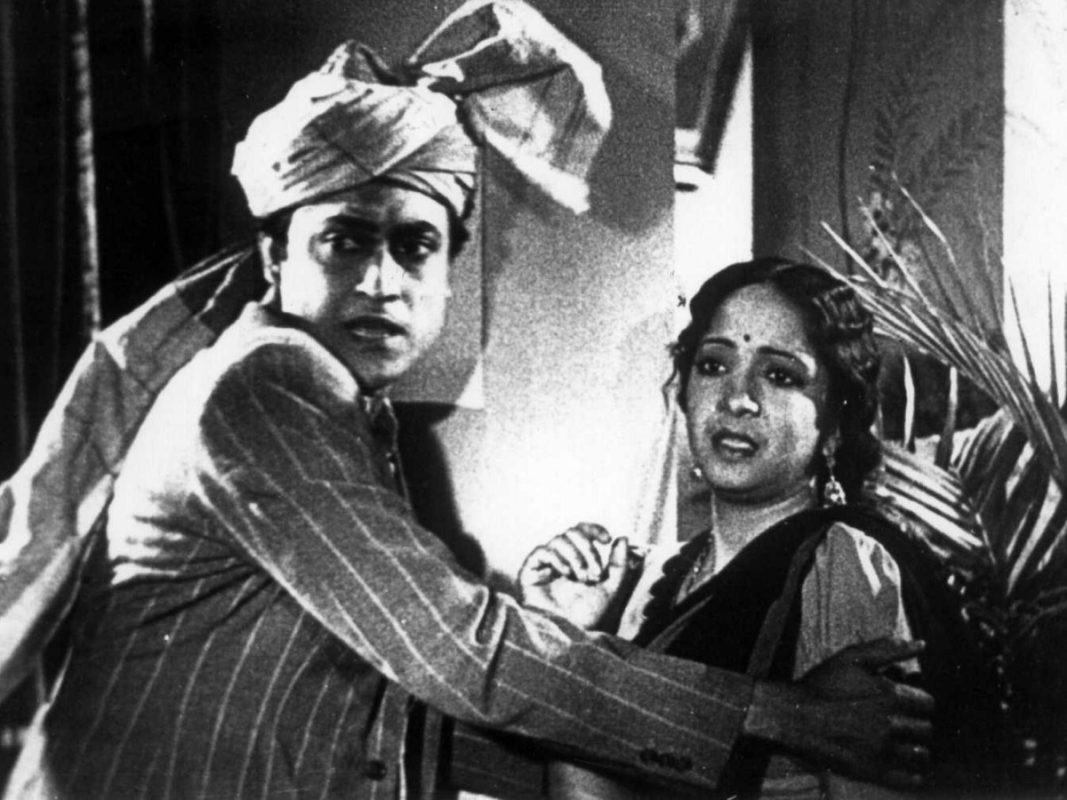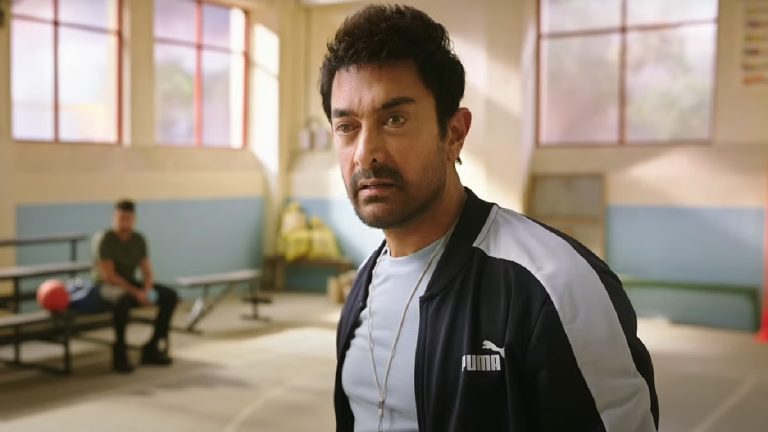“Dur hatho ae duniyawalo hindoosthan humara hain!”
We have all heard this famous slogan many times before, and in this era of chest-thumping nationalism, it is perhaps the one that has gained a special currency within popular lexicon. Any cinephile worth their salt knows, of course, that it is a famous song (and one whose inclusion was quite daring in those days of heavy censorship) from the 1943 Hindi film “Kismet,” starring Ashok Kumar as Shekhar, believed to be the first Indian anti-hero on film.
However, the film’s value and importance as a cultural text don’t simply end there. Coming out during the twilight of British rule in India, it is a text that deals not only with how the commercial Indian melodrama structure was going to look like, but also, through its subtle plot, manages to critique the contemporary Indian status quo, paving the way for the likes of Salim-Javed. Certainly, a film so critical and yet so overlooked warrants a closer analysis.
Since its emergence at the dawn of the 20th century, cinema has captivated audiences nationwide with its novelty and spectacle. However, with time, as cinematic traditions evolved from the early days of nickelodeon novelty acts to a proper industrially produced consumable product, certain standards were sure to emerge. Cinema in Hollywood, for instance, prioritized linear narratives, clearly delineated plot structure with emphasis on psychological realism and films produced under clearly defined genre expectations,i.e, westerns, comedies, melodramas, etc.
However, when Cinema arrived in India, it was quite evident that Hollywood’s methods when it came to storytelling were not going to be effective within the subcontinental context. The Indian audience has grown up on grand mythological tales like Ramayana and Mahabharata— tales which simultaneously boasted epic war sequences, romantic couples and their melodramatic courtship, intergenerational familial conflicts, and philosophical discussions – all of them within a single narrative that prioritized multiple flavours and moods over coherence and continuity. Therefore, cinema in India had to replicate that if it were to be successful.
Indian cinema during the British rule was still in its infancy, (perhaps also quite exciting), still experimenting with film’s narrative structure, form, as well as mise en scene. There was Himanshu Rai, Devika Rani’s revolutionary Bombay Talkies productions with their ambitious epics like “The Light of Asia” (an epic based on Herman Hesse’s popular novel of the same name), “A Throw of Dice” (a silent epic inspired from sections of the Indian epic, mahabharata), “Achchut Kanya” (a story about inter-caste romance, a taboo representation in India then as it is today).
Bombay Talkies can also perhaps be credited with for the first time bringing a properly structured industrial model – one which procured an assembly of popular film stars through contract and boasted a group of highly accomplished technicians who gave the studio’s films their distinct stamp. These technicians especially deserve a special mention (all too often forgotten these days) as many of them were veterans of the legendary UFA studios in Germany, brought to India by Himanshu Rai (who, along with his wife, trained there as well). They famously implemented the German expressionist style, popularized in 1920s Germany, with their emphasis on angular and arched sets, pools of darkness covering the screen, and inspired lighting techniques to externalize the inner psychological turmoil of the characters – suited for a quintessentially Indian mode of storytelling.
I call it ‘quintessential’ because Bombay Talkies’ studio’s mode of storytelling was primarily melodramatic, with the narrative progression halted by musical set pieces (by the legendary Anil Biswas). However, they acted more like Greek choruses, often subtly commenting upon the larger themes of the plot. The plot itself, as Himanshu Rai envisioned it, was indicative of a quietly radical thinking – although the stories borrowed heavily from earlier melodramatic plot structures and genre cliches, the setting, the issues, and the reality conveyed onscreen was a refreshingly contemporary one.
Important Read: Caste Was Never Part of My Story Until It Was: Featuring ‘Dhadak 2’ (2025)
“Achchut Kanya” is a great example of such social melodramas (or ‘socials’ as they were called). It features a fairly clichéd plot of doomed romance; however, here quite radical for its time (and even today’s caste-blind mainstream cinema), it concerns a budding romance between a Brahmin boy and a lower caste (Achchut) girl. Despite its many problematic elements (chiefest of all being the Achchut girl having to sacrifice herself to save everyone), it quite crucially takes an anti-caste stance.
It was, by most accounts, the only film Gandhiji ever watched—and for good reason. Unlike contemporary Hollywood cinema, which often carried colonialist, imperialist, or class- and caste-based narratives (or even the mythological frameworks of Phalke’s early works), the cinema championed by studios like Bombay Talkies infused the popular mode with a new, open, and alternative ideology—one that sought to imagine a nation stepping out of the shadows of colonial rule.
With this particular sociopolitical context, then, ‘Kismat’ becomes a fascinating text through which one understands the evolution of a nation and the medium’s specific relation to understanding the questions of class, property, and gender. The film’s plot, of course, centers on Shekhar (played with a natural sophistication by Ashok Kumar), a pickpocket and a thief who we’re introduced to in the beginning upon his release from his third prison sentence. In a key piece of dialogue with a rather nice prison warden hoping for Shekhar’s rehabilitation, he cheekily remarks,
“Kya karoon, sir? Ek taraf main akela aur dusri taraf puri police force. Mujhe anaa hi padta hain”
(“What can I do, sir? On one side, I am alone; on the other side, the entire police force. I have no other choice but to come back.”)
This brief exchange neatly captures Shekhar’s attitude toward crime: he is a thief who regards his work almost like any other profession. Soon, we are drawn into a larger underworld of pickpockets and black-marketeers—an especially efficient network that mirrors, in many ways, the so-called respectable (‘shareef’) moneylenders. These men, while cloaked in legitimacy, exploit the desperate with high-interest loans, eventually stripping them of property, family, and even self-worth.
It is fitting, then, that Shekhar’s amorality becomes a challenge to the established social order. In a childhood flashback, we meet the young Shekhar—then called Madan—being dragged home by the parents of a boy he had quarreled with. The cause of the scuffle? Madan had his name tattooed on his arm. When confronted, he insisted he was not ‘shareef.’ His father, Indarjeet—himself a so-called ‘shareef’ man—responded by striking him for this act. In India, such tattooing, known as ulki, has long been linked with the working class and was traditionally looked down upon by genteel society.
In fact, it is Indarjeet who seems to produce the most antagonistic effect and a point of conflict in the entire plot. It is his lack of sensitivity towards Madan regarding his second marriage and not being able to reconcile with his stepmother that drives him away from his family. But perhaps his most egregious and heartless action is the destruction of the family of Rani (played by Mumtaz Shanti with a gentle determination)- the heroine and, most importantly, the moral centre of the film. Rani is probably a first in Indian Cinema in terms of Female representation.
Explore More in Hindi Cinema: 50 Best Hindi Films of the 21st Century
When her father, a theatre owner, leaves his daughters after being left in heavy debt by the banker, it is Rani who takes charge of the theatre group as well as her sister’s education. Rather than being a submissive damsel-in-distress, she is the one character who stands tall despite her own physical disadvantage. It is her character who almost becomes the voice representing not only the social injustices suffered by the poverty-stricken masses at the hands of the rich through her climactic “mera ghar kyu andhera” ( a radical indictment of socioeconomic injustice long before the era of firebrand lyricists like shailendra and Sahir) but also voicing the hypocritical, gendered double standards society has when it comes to shaming men and women’s character. In a key piece of dialogue, she says to her sister, who is pregnant with the other son of the banker,
“.. Inn purushon ka kya bharosa? Inka bhiswas karke hum apne ko who dete hain aur a one ko mily a hain chall-kapat, Dhokha”
(“Who knows the honesty of men? We ruin ourselves believing them and, in return, we are deceived.”)
There is an especially interesting motif of a “stolen” necklace, cleverly put in the plot to not only bring all these characters together but also to mix it with a subtle critique. The necklace, in question, was originally stolen by Shekhar from his own stepmother during a visit to the theatre and sold to a black-marketeer. Later on, during a dalliance, Shekhar sees the necklace in a picture of a young Rani. She says that it was pawned off to pay their debts, and the audience is led to believe that it was the same one worn by Shekhar’s stepmother.
The necklace, a symbol of private property or wealth, becomes a key metaphor for many such acts of inequity left unchecked under the façade of the “Shareef” elite class. Unsurprisingly, it is Shekhar who is arrested by the police for “stealing” the necklace, not his father. There is also a bit of poetic justice procured by Rani as she manages to symbolically buy Shekhar’s freedom by making the banker sign an agreement- a subversive reversal in a film where the rich money-lenders seem to hoard others’ property through those very symbols of “legitimacy”.
However, one must remember that “Kismet” follows a melodramatic structure and therefore, like all melodramas, it is primarily about the disintegration and eventual restoration of the traditional family unit (especially the “lost and found” trope that age-old feature of commercial Indian melodramas). By the end, through various plot devices, Shekhar’s true identity is revealed, and he is restored to his family—Rani’s sister, her father, and Shekhar’s half-brother (who had left out of guilt for abandoning his love, Rani’s pregnant sister).
This structure, clearly put together with an eye on the commercial side, never manages to dampen its subtle subversion. In the process, it went on to influence the likes of Raj Kapoor, Guru Dutt, and of course Saleem-Javed duo, who themselves took from it liberally (the anti-hero, the self dependant heroine, inefficient law, rich, industrialist antagonists, the lost and found trope) to create their own cinematic texts that spoke to the urgent issues of their contemporary times.
It may well be the responsibility of cinephiles—particularly in this subcontinent, where cultural realities remain more interconnected and historically in sync with these contexts than elsewhere—to preserve and engage with these oft-forgotten works of pre-independence cinema. Only then can we cultivate a deeper, richer understanding of the nation’s history, culture, and cinematic heritage, rather than consigning them to the dusty margins of film journals and history books.









